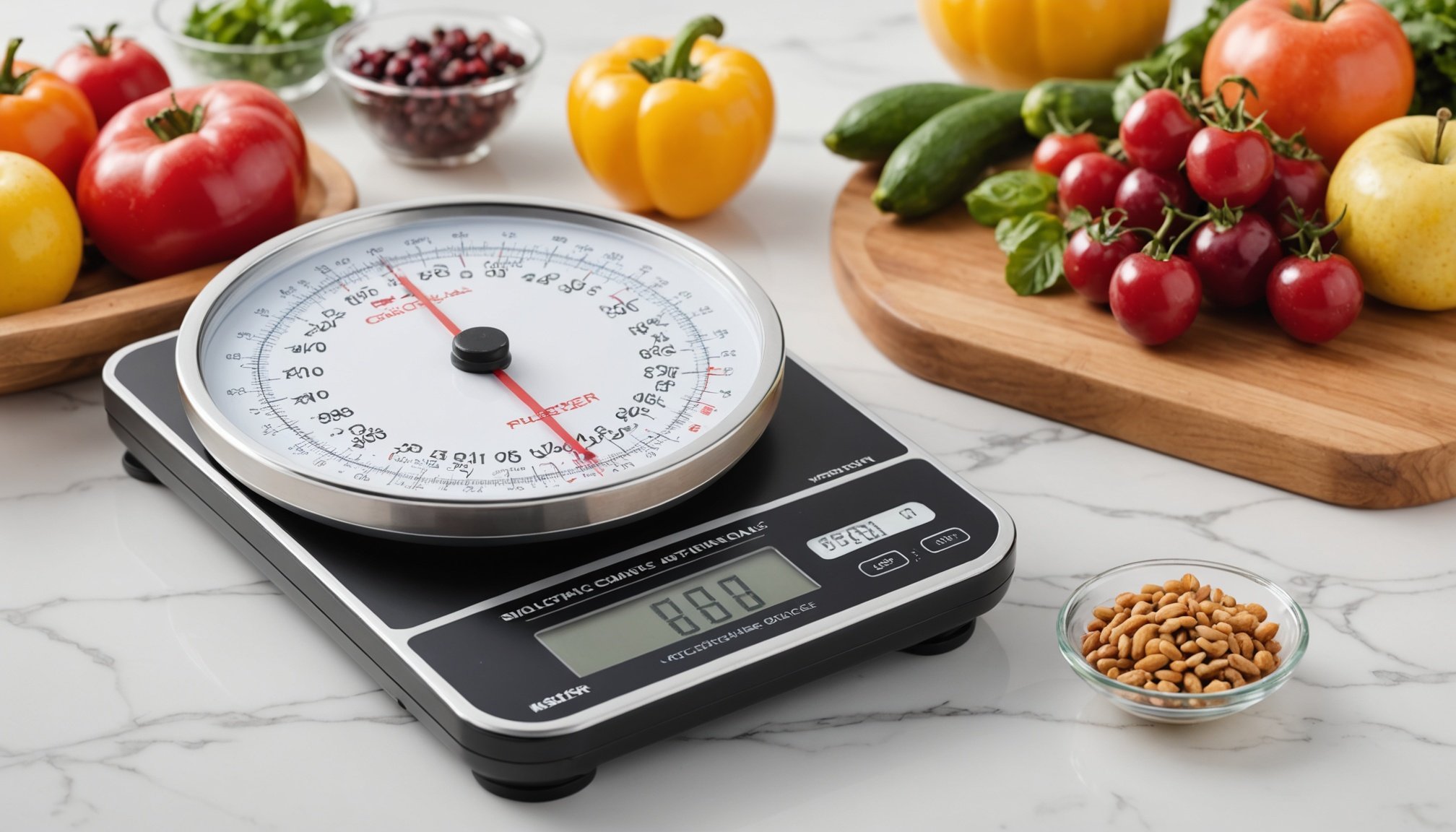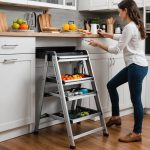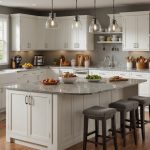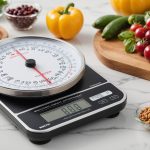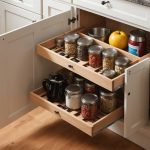Accurate measurements are essential for culinary success. A well-calibrated kitchen scale ensures precision, allowing you to replicate your favorite recipes flawlessly. This guide simplifies the calibration process, empowering you to measure ingredients with confidence. Say goodbye to errors that can ruin meals and embrace the satisfaction of perfect portions every time. Join us as we break down the steps for effective kitchen scale calibration and enhance your cooking experience.
Importance of Kitchen Scale Calibration
In the world of cooking and baking, accurate measurements are crucial. A slight deviation can lead to a dish that is too salty, too sweet, or simply off-balance. This is where kitchen scale calibration plays a vital role. Calibration ensures that your scale provides precise measurements, which is essential for cooking precision.
Also to read : Key Considerations for Choosing the Perfect Loose Leaf Tea Infuser
Imagine following a recipe that calls for 200 grams of flour. If your scale is not properly calibrated, you might end up using 220 grams or 180 grams instead. Such discrepancies can significantly alter the texture and taste of your dish, especially in baking where precision is key.
Inaccurate measurements can affect the chemical reactions in baking, leading to flat cakes or overly dense bread. By regularly calibrating your kitchen scale, you can avoid these pitfalls and ensure that your recipes turn out as intended.
Also to see : Boost Kitchen Safety and Organization: The Benefits of Magnetic Knife Strips
The benefits of using a calibrated scale extend beyond just accuracy. It also saves time and reduces waste. With precise measurements, you can confidently replicate recipes and experiment with new ones, knowing that your ingredients are measured correctly. This not only enhances your cooking but also boosts your confidence in the kitchen.
Choosing the Right Kitchen Scale
Selecting the best kitchen scale for your needs involves understanding key scale features and ensuring you have a reliable kitchen scale. When evaluating options, consider the scale's capacity, readability, and accuracy. Digital scales often provide more precise measurements compared to mechanical ones, offering features such as tare functions and unit conversions.
Key Features to Look For
- Capacity and Precision: Ensure the scale can handle the weight of your typical ingredients with precision. A range of up to 5 kg is usually sufficient for home cooks.
- Readability: Choose a scale with a clear, easy-to-read display. Backlit screens can be helpful in dim lighting.
- Tare Functionality: This feature allows you to subtract the weight of the container, providing accurate measurements of the ingredients alone.
Digital vs. Mechanical Scales
Digital scales are generally preferred for their accuracy and additional features. However, mechanical scales can be more durable and do not require batteries. Consider your cooking style and preferences when making a choice.
Popular Brands and Models
Some well-regarded brands include OXO, Escali, and Etekcity. Models from these brands are often praised for their accuracy and user-friendly designs. Opting for a model from a reputable brand can ensure reliability and longevity in your kitchen adventures.
Step-by-Step Calibration Process
Calibrating your kitchen scale is essential for measurement accuracy. Follow these calibration steps to ensure your scale is ready for precise cooking.
Preparing the Scale for Calibration
Before starting, ensure the scale is on a flat, stable surface. Clean the weighing platform to remove any debris that might affect the reading. Ensure the scale is turned off before proceeding with the calibration.
Detailed Steps for Calibrating Different Types of Scales
For digital scales, turn the scale on and press the calibration button, often marked as "CAL" or "MODE". Place a known weight, like a 100g calibration weight, on the scale. Adjust the scale until it reads the correct weight. For mechanical scales, locate the adjustment knob or screw. Place a known weight and adjust the knob until the scale needle points to the correct weight.
Testing Accuracy Post-Calibration
Once calibrated, test the scale's accuracy by weighing different known weights. If the scale consistently displays the correct weights, it is properly calibrated. If not, repeat the calibration steps. Regular calibration ensures your kitchen scale remains accurate, providing confidence in your cooking measurements.
Common Calibration Issues and Troubleshooting
Understanding calibration issues is crucial in maintaining the accuracy of your kitchen scale. These problems can lead to scale errors, affecting your cooking results. Identifying these issues early can save time and frustration.
Identifying Common Calibration Problems
A common problem is the scale displaying inconsistent weights for the same item. This might be due to an uneven surface or debris on the weighing platform. Another issue is the scale not zeroing correctly, which can occur if the tare function is faulty or if the scale is not reset properly after each use.
Solutions for Frequent Calibration Errors
To troubleshoot kitchen scale errors, ensure the scale is placed on a stable, flat surface. Clean the platform regularly and check the battery level if using a digital scale. If the scale fails to zero, recalibrate following the manufacturer's instructions. For mechanical scales, ensure the adjustment knob is functioning correctly.
When to Seek Professional Help or Replace the Scale
If troubleshooting does not resolve the issues, it may be time to seek professional help. Persistent calibration problems can indicate a mechanical fault or sensor damage. In such cases, consider replacing the scale, especially if it frequently affects your cooking precision. Investing in a reliable model can prevent future errors and enhance your culinary experience.
Visual Aids for Calibration
Incorporating visual aids in the calibration process can significantly enhance your understanding and execution of kitchen scale calibration. These aids can range from simple measurement charts to detailed kitchen scale guides that visually demonstrate each step.
Importance of Visual Aids
Visual aids simplify complex instructions, making them more accessible and easier to follow. They provide a clear reference, reducing the likelihood of errors during calibration. For instance, a step-by-step photo series or video can illustrate the correct placement of weights and the adjustment process, ensuring accuracy.
Examples of Calibration Visuals
- Photos: A series of images showing each calibration step can be invaluable. They can depict the correct button to press or the right way to place a calibration weight.
- Videos: Watching a video guide can offer dynamic insights, such as the movement of the scale needle or digital readout changes during calibration.
Measurement Charts
Measurement charts are essential tools, offering quick reference for ingredient conversions and common weights. These charts can help verify that your scale's readings align with standard measurements, ensuring consistent cooking results. By integrating these visual aids, you can enhance your calibration routine, leading to more precise and reliable kitchen outcomes.
FAQs on Kitchen Scale Calibration
Navigating the world of kitchen scales can be daunting, but understanding kitchen scale FAQs will equip you with the knowledge to maintain precision in your culinary endeavours.
Addressing Common Calibration Questions
How often should I calibrate my kitchen scale? Ideally, calibrate your scale every few months or whenever you notice discrepancies in measurements. Regular calibration ensures consistent accuracy.
Why does my scale show different weights for the same item? This common issue can arise from an uneven surface or debris on the weighing platform. Ensure your scale is placed on a stable, flat surface and clean the platform regularly.
Clarifying Misconceptions
Digital scales are always accurate, right? While digital scales often provide precise readings, they require regular calibration and battery checks to maintain accuracy. Mechanical scales, though less precise, can be reliable with proper maintenance.
Tips for Maintaining Scale Accuracy
- Regular Calibration: Follow the manufacturer's instructions to recalibrate your scale periodically.
- Stable Placement: Always use your scale on a flat, stable surface to prevent inaccurate readings.
- Cleanliness: Keep the weighing platform free from debris and residue, which can affect measurements.
By addressing these calibration questions and understanding common issues, you can ensure your kitchen scale remains a reliable tool in your cooking arsenal.
Conclusion: Ensuring Consistent Cooking Results
Achieving consistent cooking results hinges on the precision of your kitchen tools, particularly your scale. Recipe accuracy is not just about following instructions but ensuring that each ingredient is measured with exactness. Regularly checking and recalibrating your kitchen scale is vital for maintaining this precision.
By embracing long-term calibration benefits, you ensure that every dish you create meets the intended taste and texture. This practice not only enhances your cooking but also builds confidence in your culinary skills.
Investing in quality kitchen equipment is a wise decision for any cooking enthusiast. A reliable kitchen scale is a cornerstone of a well-equipped kitchen, providing the foundation for accurate measurements and successful recipes. By prioritising calibration and quality tools, you set yourself up for consistent cooking success, transforming everyday meals into delightful culinary experiences.

